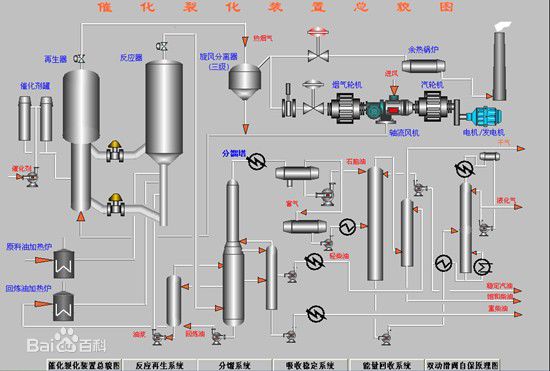
Yingkou Qingying Petrochemical Equipment Co., Ltd
Marketing department: manager Guo
Mobile: 18641771136
Purchasing department: Manager Zhu
Mobile: 13050617889
Address: No. 58, South Binhai Road, Xishi District, Yingkou, Liaoning, China
The main component is still the Y-type zeolite catalyst itself, which plays a major role in cracking. Others as auxiliaries mainly include ①combustion accelerant; ②octane number additive (to improve gasoline octane number and olefin yield); ③sulfur transfer agent; ④ vitriol catcher, etc. The new large-pore zeolite YPI-5 may be used for heavy oil cracking. YPI-5 has a large volume and a diameter of 1.0 nm. Therefore, the current strategy for heavy oil cracking catalysts is: ① Use USY zeolite with the lowest unit cell constant; ② Use high zeolite ③Use low rare earth addition; ④Control the activity ratio of matrix to zeolite; ⑤Control matrix pore size distribution;
At present, high-quality catalysts contain about 40% zeolite. Due to the increase in the amount of additives used, the concentration of Y-type zeolite in the catalyst system is diluted. The silica-alumina ratio of the shape-selective molecular sieve is higher than that of the Y-type molecular sieve, so it is more wear-resistant and has good stability; in terms of activity, the Y-type molecular sieve is about 2 times that of the shape-selective molecular sieve; for the same molecular sieve, the aluminum-silicon ratio is large, The acid density is high, and the size of the aluminum atom is also larger than that of the silicon atom, so the unit cell constant is large, the activity is high, the dry gas and coke are high, but the aluminum is unstable. The lower aluminum atoms gradually fell off, the size of the unit cell gradually became smaller, and the activity also gradually decreased. The grain size of a Y-type molecular sieve is about 1 μm (1000 nm), the size of a fresh shape-selective molecular sieve is about 7-8 μm, and after wear, it is about 1-2 μm, which can be understood as a Y-type molecular sieve grain (1 μm) about Includes 500 unit cell (lattice, 2.43 nm) size.
The diameter of the molecular sieve and the matrix is about 1-3 μm. If the average diameter of the catalyst particles is 60 μm, it can be understood as (1.5 μm × 20 molecular sieve + 1.5 μm × 20 matrix) composition. After the raw oil is atomized by the nozzle, the average diameter of the oil droplets is about 60 μm, which is equivalent to the average diameter of the catalyst particles. The diameter of the relatively large residue oil molecules is about 1 to 3 nm, and many similar molecules are aggregated and atomized. Afterwards, oil droplets about 60 μm are formed. The particle size of the catalyst is basically in a normal distribution. Generally, the pore size of the Y-type molecular sieve is about 0.74 nm. The most basic unit of the molecular sieve is composed of a unit cell, and its diameter is about 2.45 nm (new agent). After dehydration, the pore diameter shrinks. The diameter is reduced to 2.425 nm. The pore size distribution of the matrix is relatively wide, usually between 0 and 50 nm, which is suitable for the precracking of large-diameter residue oil molecules. The pore size of the matrix can be flexibly adjusted according to the size of the heavy oil molecule and the catalyst formula. The unit cell constant is large (usually the ratio of silicon to aluminum is small or the new agent), the catalyst activity is high, the conversion rate is high, the yield of dry gas and coke is high, but it is unstable and the hydrothermal stability is poor; Larger ratio or balancer), low catalyst activity, partial shrinkage and sintering, and good hydrothermal stability.
The matrix is all inert, and some active matrix is added to the inert matrix. The pore volume should actually include the pore volume of macropores, mesopores and small pores. Secondary pores are pores formed by the collapse of the molecular sieve surface by a specific method, which is conducive to the cracking of small molecules.
